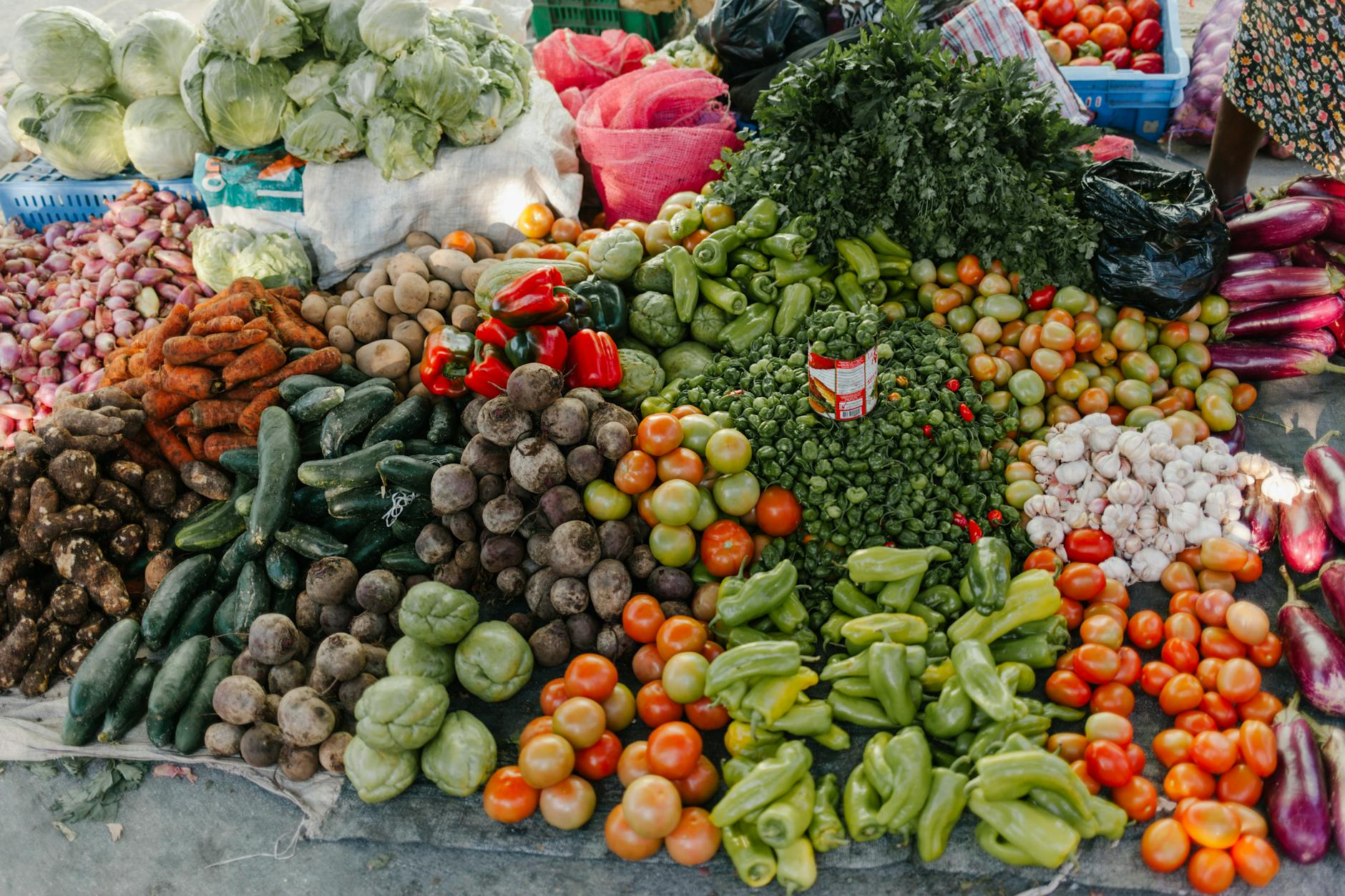Discover the mystery behind umami, the elusive fifth taste that adds depth and richness to our favorite foods. Taste it!
Table of Contents
- Introduction to Umami: Discovering the Fifth Taste
- What Exactly Is Umami?
- Where Can You Find Umami?
- The Delicious Benefits of Umami
- Cooking Up Some Umami: Tips to Increase Umami in Your Meals
- Famous Chefs and Umami
- Umami in Snacks and Candies
- Your Turn: Unleash the Umami!
- Summing Up the Umami Journey
- Fun Umami Facts Quiz
- FAQs About Umami
Introduction to Umami: Discovering the Fifth Taste
Kickoff your taste bud journey by introducing kids to the unique and fascinating flavor of umami, which is considered the fifth taste along with sweet, sour, bitter, and salty. In the world of flavors, umami brings a whole new dimension to the culinary adventure, opening up a whole new world of taste experiences.
Umami flavor is not just any ordinary taste; it is a special flavor that adds richness and depth to food. Imagine a burst of savory deliciousness that enhances the overall taste of a dish. As we explore the realm of umami, we will uncover the secrets behind this intriguing taste and discover how it plays a vital role in many recipes from different cuisines around the globe.
What Exactly Is Umami?
Umami is a special flavor that is often referred to as the fifth taste, alongside sweet, sour, bitter, and salty. Unlike the other four tastes that are more well-known, umami adds a unique savory quality to foods that makes them extra delicious.
A Little Science Behind Umami
Umami flavor comes from an amino acid called glutamate, which is found naturally in foods like tomatoes, mushrooms, and meat. When we eat foods rich in umami, our taste buds send signals to our brain to let us know we’re experiencing that savory taste sensation. It’s like a party for your taste buds!
History of Umami Discovery
The discovery of umami dates back to early 1900s when a Japanese scientist named Kikunae Ikeda identified this unique taste. He noticed that certain foods, like seaweed and soy sauce, had a distinct flavor that couldn’t be explained by just sweet, sour, bitter, or salty. And that’s how umami was born!
Where Can You Find Umami?
Umami flavor can be found in various foods from different parts of the world. These foods are often used in popular recipes and traditional cuisines, making the culinary adventure even more exciting.

Image courtesy of www.teafolly.com via Google Images
Common Umami-Rich Foods
Some common foods that are rich in umami flavor include cheese, which can add a creamy and savory taste to dishes, tomatoes that bring a bright and tangy flavor, and soy sauce which adds depth and richness to many Asian recipes.
Cultural Dishes with Umami
Many different cultures around the world incorporate umami into their traditional dishes. For example, in Japan, miso soup is rich in umami from fermented soybeans, while Italians use Parmesan cheese to enhance the savory taste of their pasta dishes. Each culture has its own unique way of embracing the delicious umami flavor, adding to the diverse world of flavors.
The Delicious Benefits of Umami
Umami is not just a tasty flavor; it also has some fantastic benefits for your health. Let’s explore why umami is not only yummy but also good for you.
Enhancing Health and Flavor
Umami can actually enhance other flavors in food. When added to dishes, it can make them taste even better by bringing out the different tastes. This means you can enjoy a more flavorful meal without having to add extra salt or sugar.
Rich in Nutrients
Many umami-rich foods are packed with essential nutrients that are good for your body. Ingredients like tomatoes, mushrooms, and seaweed, which are high in umami, are also rich in vitamins, minerals, and antioxidants that can help keep you healthy and strong.
Next time you’re enjoying a savory bowl of miso soup or biting into a juicy burger, remember that umami not only makes your food taste great but also offers some fantastic health benefits.
Cooking Up Some Umami: Tips to Increase Umami in Your Meals
When you’re ready to embark on a culinary adventure and add extra deliciousness to your meals, umami is here to help! Let’s discover some simple ways to enhance the flavors of your favorite dishes with this special taste.

Image courtesy of www.abokichi.com via Google Images
Easy Umami-Boosting Recipes
Are you a fan of mac and cheese or spaghetti and meatballs? To amp up the umami factor in these dishes, try adding some grated Parmesan cheese or a splash of soy sauce. These ingredients will bring out the savory goodness that your taste buds will love.
Combining Flavors
Umami works wonders when combined with other flavors like sweet or salty. For a tasty treat, try wrapping a piece of bacon around a date or adding some tomato paste to your vegetable soup. The combination of these tastes will create a symphony of flavors in your mouth, making your meals extra satisfying.
Famous Chefs and Umami
Have you ever wondered how some of the best chefs in the world create such delicious dishes? Well, one secret ingredient they often use is umami! Let’s explore how famous chefs incorporate this unique taste into their cooking, making their recipes even more mouth-watering.
Mastering Umami in Culinary Arts
Renowned chefs like Nobu Matsuhisa, known for his fusion cuisine blending Japanese and Peruvian flavors, understand the power of umami. By skillfully combining ingredients like miso, soy sauce, and mushrooms, they create dishes that tantalize our taste buds with umami’s savory goodness.
Umami Secrets of Jamie Oliver and Nigella Lawson
Even celebrity chefs like Jamie Oliver and Nigella Lawson are big fans of umami. Whether it’s adding a splash of Worcestershire sauce to enhance the flavor of a hearty stew or sprinkling Parmesan cheese over a pasta dish, these cooking icons know how to elevate a meal by incorporating umami-rich ingredients.
Learning from these culinary masters can inspire you to embark on your own umami-filled culinary adventure in the kitchen. Who knows, you might discover your own signature umami dish that wows your friends and family!
Umami in Snacks and Candies
Umami flavor isn’t just limited to savory meals and dishes; it can also be found in some unexpected treats like snacks and candies, which might surprise you!

Image courtesy of www.teafolly.com via Google Images
Surprising Umami Snacks
Believe it or not, some popular snacks actually contain umami flavor. Potato chips, especially those with flavors like barbecue or cheese, often have a hint of umami due to the ingredients used in their seasonings. Snack mixes with ingredients like nuts, soy sauce, or even seaweed can also provide that savory umami kick that makes them so addictive!
Umami in Sweet Treats
Even in the world of candies, umami can make an appearance. Have you ever noticed how some chocolates have a depth of flavor that goes beyond just sweetness? That could be a touch of umami at play. Caramel candies, especially those with a sprinkle of sea salt, can also offer hints of that rich and savory taste that enhances the overall sweetness.
| Umami Flavor | Definition |
|---|---|
| The Fifth Taste | Umami is one of the five basic tastes, along with sweet, sour, bitter, and salty. It is described as a savory, meaty, or brothy taste that enhances other flavors. |
| Discovery | Umami was first identified by Japanese scientist Kikunae Ikeda in 1908. He isolated glutamate, an amino acid found in many foods that contributes to the umami taste. |
| Common Sources | Umami can be found in foods such as tomatoes, mushrooms, parmesan cheese, soy sauce, and seaweed. MSG, a flavor enhancer, also provides a strong umami taste. |
| Effects on Food | Adding umami-rich ingredients to dishes can balance flavors, increase depth, and improve overall taste. It is often used in cooking to create more flavorful and satisfying meals. |
So, next time you’re enjoying your favorite snack or indulging in a sweet treat, see if you can detect a subtle umami flavor that adds an extra layer of deliciousness!
Your Turn: Unleash the Umami!
Now that you’ve learned all about the wonderful world of umami flavor and how it can enhance your culinary adventure, it’s time to put that knowledge into action! Here are some ideas on how you can unleash the umami in your own kitchen:
Experimenting with Umami
Try adding umami-rich ingredients like mushrooms, Parmesan cheese, or miso paste to your favorite dishes. See how these flavors enhance the overall taste and make your meal even more delicious!
Creating Umami Magic
Get creative with umami by inventing your own recipes that incorporate savory flavors. Maybe you can come up with a new pasta dish or a unique stir-fry that showcases the power of umami!
Umami Taste Test
Challenge your taste buds by trying different foods that are known for their umami flavor. See if you can identify the savory taste and appreciate how it adds depth to the dish.
By experimenting with umami in your cooking, you’ll not only expand your palate but also discover a whole new world of flavors waiting to be explored!
Summing Up the Umami Journey
As we wrap up our exploration of the umami flavor, we can now appreciate how this unique taste adds depth and richness to the world of flavors we experience every day. Just like sweet, sour, bitter, and salty, umami plays a crucial role in making our meals delicious and satisfying.

Image courtesy of www.pinterest.com via Google Images
Reflecting on Our Umami Adventure
Throughout this culinary adventure, we’ve learned that umami isn’t just a sensation on our taste buds; it’s a key element in various cuisines around the world. From the savory goodness of soy sauce to the rich taste of Parmesan cheese, umami enriches the dishes we love.
Expanding Our Flavor Palette
By understanding umami, we open ourselves up to a whole new world of flavors and possibilities in the kitchen. It’s amazing to think about how this fifth taste can elevate our favorite recipes and transform the way we experience food.
The Power of Umami
Not only is umami delicious, but it also has potential health benefits and can enhance the overall taste of our meals. So, the next time you’re cooking or enjoying a meal, remember to appreciate the savory magic of umami.
As we conclude our umami journey, let’s continue to explore new flavors, experiment with different recipes, and delight in the culinary wonders that the world of umami has to offer.
Fun Umami Facts Quiz
Are you ready to test your knowledge about the fascinating world of flavors and the unique umami taste? Take this fun quiz to see how much you’ve learned about this mysterious fifth taste!
Question 1:
Which of the following are considered the four traditional tastes, along with umami?
A) Sweet, sour, bitter, salty
B) Spicy, tangy, creamy, crunchy
C) Savory, zesty, bland, tart
D) Rich, smoky, floral, earthy
Question 2:
What is the main characteristic of umami flavor?
A) Sweet
B) Sour
C) Salty
D) Savory
Question 3:
Which of the following foods is NOT typically rich in umami flavor?
A) Cheese
B) Tomatoes
C) Soy sauce
D) Ice cream
Question 4:
True or False: Umami can enhance the flavors of other foods.
A) True
B) False
Test your umami knowledge and see how much of a flavor expert you are!
FAQs About Umami
Why didn’t I know about umami before?
Umami is a unique taste that has been recognized for centuries in certain cultures, particularly in Asian cuisine. However, it only gained widespread attention in recent years as scientists began to study taste in more detail. So, don’t worry if you’re just discovering umami now – it’s never too late to learn about this fascinating flavor!
Can I taste umami on its own?
Umami is often described as a subtle, savory, and mouthwatering taste that enhances the overall flavor of dishes. While it may not be as easily detectable on its own compared to flavors like sweet or salty, you can certainly experience umami’s deliciousness when it’s present in food. Try savoring dishes known for their umami-rich ingredients, such as miso soup or Parmesan cheese, to get a better sense of this unique taste.
How can I tell if something has umami in it?
Identifying umami in food can be a fun challenge! Look for ingredients that are naturally high in glutamate, the amino acid responsible for the umami taste. Foods such as tomatoes, mushrooms, soy sauce, and aged cheeses like Parmesan are excellent sources of umami flavor. When you taste a dish and notice a rich, savory depth of flavor that makes your taste buds dance, chances are you’re experiencing umami!





